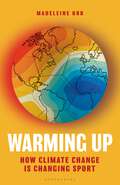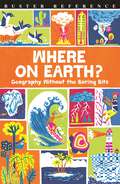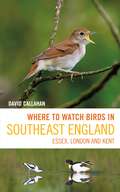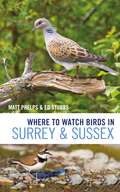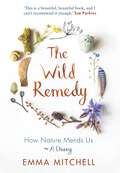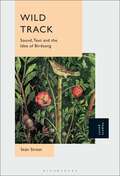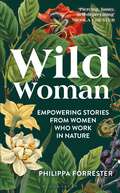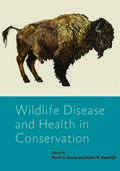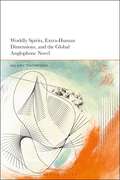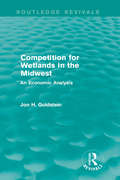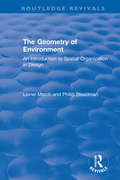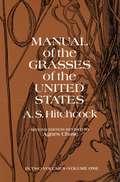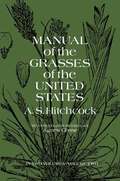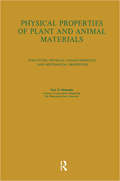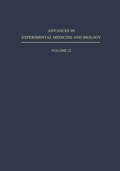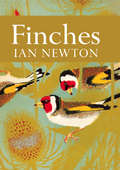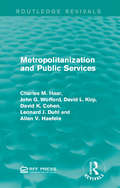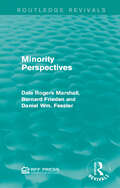- Table View
- List View
Warming Up: How Climate Change is Changing Sport
by Madeleine OrrThe world of sport has a new opponent: climate change.In recent years, a world championship marathon was held at midnight to avoid the blistering sun. Professional athletes needed oxygen tanks to play during wildfire season in California. Players collapsed and play was suspended amid the heat and bushfire smoke at the Australian Tennis open. Ski resorts in the Alps have turned into ghost towns. Golf courses are sinking into the sea. And then there's the Qatar World Cup, among the greatest follies in sporting history, one that saw hundreds (perhaps thousands) of heat-induced deaths before a ball was even kicked. The threat climate change poses to sport is clear, but with billions of participants and fans around the world who rely on the sector for entertainment, jobs, fitness and health, this is one industry we can't afford to lose. In this book, Madeleine Orr shows it doesn't have to be this way. There are ways to mitigate, and perhaps counter, even the worst elements of climate change. A world-leading sport ecologist, Madeleine interviews athletes, coaches, politicians and thought-leaders to learn more about the inevitable consequences for this trillion-dollar industry. From the frontlines of climate change, Warming Up takes readers through a play-by-play of how global warming is already impacting sport, and how the sports world can fight back.
Where On Earth?: Geography Without the Boring Bits
by James DoyleWhere on Earth? is jam-packed with all of geography's greatest hits, with all the boring bits taken out. From how to make a raindrops to cool ways to remember the world's wonderful waterfalls, longest rivers and most desolate deserts - plus all the countries and continents in which these fantastic features are found. The perfect learning companion to help all school children get to grips with discovering the world around them.
Where to Watch Birds in Southeast England: Essex, London and Kent (Where to Watch Birds)
by David CallahanThe definitive site guide to a surprisingly bird-rich corner of England – Kent, Essex and the Greater London area.From the deep forests of Kent to the low-lying mudflats, beaches and saltmarshes of the Greater Thames Estuary, this ecologically rich area of England attracts vast numbers of wildfowl and waders. The region boasts many internationally and nationally important reserves including Rainham Marshes and Cliffe Pools, while Dungeness in Kent is one of Britain's best known birding hotspots for vagrant species such as Penduline Tit and Kentish Plover. London itself contains numerous birdwatching sites including Barnes and Woodberry Wetlands, along with some of the best spots in Britain for scarcities such as Lesser Spotted Woodpecker and Black Redstart. From Marsh Harrier and Firecrest to Curlew and Lapwing, there is plenty for birdwatchers to enjoy while exploring the parks, wetlands, woodlands and coast of southeast England. Written by life-long birdwatcher David Callahan, this is the definitive guide to the birding highlights of the region. It contains a comprehensive review of all the major sites and many lesser-known ones, with maps, notes on access, and information on target species and when to visit. Where to Watch Birds in Southeast England is indispensable for any birder exploring the region, or anyone in London wanting to head out to the countryside and enjoy a slice of our rich avian heritage.
Where to Watch Birds in Surrey and Sussex (Where to Watch Birds)
by Matthew Phelps Ed StubbsThis site guide covers the counties of East Sussex, West Sussex and Surrey, including sites in southwest Greater London. From the heaths of Surrey to the chalky grassland of the North and South Downs, the great forests of the Weald and the headlands, shingle beaches and river valleys of England's south coast, these three counties are a bird-rich part of the country, with perhaps the most diverse range of habitats in the country, and all within easy distance of London, the southwest part of which contains birding sites such as Barnes wetland centre.This new book by Matthew Phelps and Ed Stubbs is the definitive guide to the birding highlights of the region. It contains a comprehensive review of all the major sites, and many lesser-known ones, with maps, notes on access, and information on target species and when to visit. Where to Watch Birds in Surrey and Sussex is indispensable for any birder heading to this bird-rich region, or anyone in London who wants to head south to enjoy some of the best birding England can offer.
The Wild Remedy: How Nature Mends Us - A Diary
by Emma MitchellTHE SUNDAY TIMES BESTSELLER Emma Mitchell's richly illustrated and evocative diary records her nature finds over the course of a year and shows how being in the wild benefits our mental and physical wellbeing. 'This is a beautiful, beautiful book, I can't recommend it enough.' Sue Perkins_________________________‘Profound, inspiring and exquisite.’ Emma Freud_________________________‘Precise, gorgeous and inspiring.’ Amy Liptrot _________________________Emma Mitchell has suffered with depression – or as she calls it, 'the grey slug' – for twenty-five years. In 2003, she moved from the city to the edge of the Cambridgeshire Fens and began to take walks in the countryside around her new home, photographing, collecting and drawing as she went. In Emma's hand-illustrated diary, she takes us with her as she follows the local paths and trails, sharing her nature finds over the course of a year. Reflecting on how these encounters impact her mood, Emma's candid account of her own struggles is a powerful testament to how reconnecting with nature can be as medicinal as any talking therapy or pharmaceutical.Written with Emma's characteristic wit and frankness, and filled with her beautiful drawings, paintings and photography, this is a truly unique book for anyone who has ever felt drawn to nature and wondered about its influence over us.
Wild Track: Sound, Text and the Idea of Birdsong
by Seán StreetWild Track is an exploration of birdsong and the ways in which that sound was conveyed, described and responded to through text, prior to the advent of recording and broadcast technologies in the late 19th and early 20th centuries. Street links sound aesthetics, radio, natural history, and literature to explore how the brain and imagination translate sonic codes as well as the nature of the silent sound we "hear" when we read a text. This creates an awareness of sound through the tuned attention of the senses, learning from sound texts of the natural world that sought – and seek – to convey the intensity of the sonic moment and fleeting experience. To absorb these lessons is to enable a more highly interactive relationship with sound and listening, and to interpret the subtleties of audio as a means of expression and translation of the living world.
Wild Woman: Empowering Stories from Women who Work in Nature
by Philippa ForresterAn engaging blend of conservation stories and humorous, personal anecdotes from Philippa Forrester about women who, like her, choose to live and work in the wild.Surviving in the wilderness has long been associated with men, and conservation and environmental biology have traditionally been male-dominated subjects. Yet many remarkable women also choose to live and work in wild and challenging landscapes. In Wild Woman, Philippa Forrester considers the grit and determination required for women to maintain connections to wildlife and shares stories of female conservation heroes and other extraordinary wild women working in nature. Talking to women from around the world, Philippa studies and celebrates what it means to be a wild woman. From the sixteenth-century botanist who was the first woman to circumnavigate the globe to modern-day women responding to bear attacks in Yellowstone, working to rewild reserves in South Africa, photographing Caribou in the Arctic and more, Philippa examines how these women benefit from a life spent in the wilderness and also considers what the natural world gains from them. Relating some of her own experiences from three decades spent travelling around the world and working in some of the wildest places on Earth, Philippa asks: what does it take for a woman to live or work in the wild?
Wildlife Disease And Health In Conservation (Wildlife Management And Conservation Ser.)
by David A. Jessup Robin W. RadcliffeWorldly Spirits, Extra-Human Dimensions, and the Global Anglophone Novel
by Dr Hilary ThompsonEngaging a diverse range of contemporary anglophone literature from authors of the Asian, Middle Eastern and Caribbean diasporas, this book explores how such works turn to spirit forces, spirit realms and spirit beings - were-animals, mystical birds, and snake goddesses - as positive forces that assert perceptual dimensions beyond those of the human, and present a vision of Earth as agentive and animate. With previous scholarship downplaying these aspects of modern works as uncanny hauntings or symptoms of capitalism's or anthropocentrism's destructiveness, or within a blanket rubric of 'magical realism', Hilary Thompson rejects this partitioning of them as products of an exotic East or global South. By contrast, this book builds a new critical framework for analysis of worldly spirits, drawing on anthropological discussions of animism, the newly recovered 1930s boundary-crossing art movement Dimensionism, and multispecies theories of animals' diverse perceptual worlds. Taking stock of novels published from 2018-2020 by such writers as Amitav Ghosh, André Alexis, Yangsze Choo, Azareen Van der Vliet Oloomi, Zeyn Joukhadar, and Tanya Tagaq, Thompson illuminates how these works extend an ecological call to decentre the human and align with multidimensional theories of art and literature to provide ways to read for rather than reduce the extra-human dimensions emerging in contemporary fiction. A refreshing rejection of ecological apocalypticism, this book unsettles typical conceptualizations of both anglophone and Anthropocene literatures by invoking European art theory, philosophy, and non-Western ideas on animism and spirits to put forward perceptions of the extra-human as a form of dealing with the many uncertainties of today's different crises.
Competition for Wetlands in the Midwest: An Economic Analysis (Routledge Revivals)
by Jon H. GoldsteinIn the Midwest, wetlands can be seen as a nuisance to farmers as they can severely increase production costs. Wetlands are however are a major part of ecology for migratory waterfowl and drainage of these wetlands could have dire consequences on the population of waterfowl as well as other wildlife. Originally published in 1971, this report attempts to break down the economic factors of competition for wetlands in Minnesota and surrounding areas in a policy-relevant way and to suggest new policy alternatives. This title will be of interest to students of Environmental Studies.
Competition for Wetlands in the Midwest: An Economic Analysis (Routledge Revivals)
by Jon H. GoldsteinIn the Midwest, wetlands can be seen as a nuisance to farmers as they can severely increase production costs. Wetlands are however are a major part of ecology for migratory waterfowl and drainage of these wetlands could have dire consequences on the population of waterfowl as well as other wildlife. Originally published in 1971, this report attempts to break down the economic factors of competition for wetlands in Minnesota and surrounding areas in a policy-relevant way and to suggest new policy alternatives. This title will be of interest to students of Environmental Studies.
The Geometry of Environment: An Introduction to Spatial Organization in Design (Routledge Revivals)
by Lionel March Philip SteadmanOriginally published in 1971 The Geometry of Environment is a fusion of art and mathematics introducing stimulating ideas from modern geometry, using illustrations from architecture and design. The revolution in the teaching of mathematics and the advent of the computer in design challenge traditional ways of appreciating the space about us, and expand the ‘structural’ understanding of our surroundings through such concepts as transformations, symmetry groups, sets and graphs. This book aims to show the relevance of ‘new maths’ and encourages exploration of the widening intellectual horizons of environmental design and architecture.
The Geometry of Environment: An Introduction to Spatial Organization in Design (Routledge Revivals)
by Lionel March Philip SteadmanOriginally published in 1971 The Geometry of Environment is a fusion of art and mathematics introducing stimulating ideas from modern geometry, using illustrations from architecture and design. The revolution in the teaching of mathematics and the advent of the computer in design challenge traditional ways of appreciating the space about us, and expand the ‘structural’ understanding of our surroundings through such concepts as transformations, symmetry groups, sets and graphs. This book aims to show the relevance of ‘new maths’ and encourages exploration of the widening intellectual horizons of environmental design and architecture.
Manual of the Grasses of the United States, Volume One
by A. S. U.S. Dept. of Agriculture A. S. HitchcockThis work is actually the definitive encyclopedia of United States grass life. Compiled from the U.S. National Herbarium collection, the largest of its kind in the world, it is the only complete manual of U.S. grasses available and one of the basic reference works on U.S. plant life. It catalogs and describes in detail all 1,398 numbered species in 169 numbered genera found in this country, plus 120 species in 16 genera of the so-called “waifs.” Professor Hitchcock is the former Chief Botanist in charge of systematic agrostology for the U.S. Department of Agriculture, by whom the work was originally published, and an internationally known authority.The heart of the book is its detailed descriptions of the family of grasses, the two main subfamilies, the tribes, genera, and species. Quick finding keys are provided for the identification of tribes and genera. Each of the species is given thorough botanical description, including various aspects of its morphology — size, shape, form of culms, blades, panicles, spikes, and flowers — and height, proper planting season, and range of distribution are noted. The Manual also outlines the common uses to which grasses are put and discusses in general terms their distribution, classification, nomenclature, and common names. The 1,199 drawings make identification of any grass species found in the United States a virtual certainty. The appended synonymy of alternate names for each species provides an authoritative taxonomy, eliminating confusion.The nature lover with no more technical equipment than a keen eye can use this manual with profit, for a glossary of botanical terms is included. Naturalists, botanists, agriculturists, and horticulturists will find it valuable as a field and research guide to virtually all the grasses that grow in this country.
Manual of the Grasses of the United States, Volume Two
by A. S. U.S. Dept. of Agriculture A. S. HitchcockThis work is actually the definitive encyclopedia of United States grass life. Compiled from the U.S. National Herbarium collection, the largest of its kind in the world, it is the only complete manual of U.S. grasses available and one of the basic reference works on U.S. plant life. It catalogs and describes in detail all 1,398 numbered species in 169 numbered genera found in this country, plus 120 species in 16 genera of the so-called “waifs.” Professor Hitchcock is the former Chief Botanist in charge of systematic agrostology for the U.S. Department of Agriculture, by whom the work was originally published, and an internationally known authority.The heart of the book is its detailed descriptions of the family of grasses, the two main subfamilies, the tribes, genera, and species. Quick finding keys are provided for the identification of tribes and genera. Each of the species is given thorough botanical description, including various aspects of its morphology — size, shape, form of culms, blades, panicles, spikes, and flowers — and height, proper planting season, and range of distribution are noted. The Manual also outlines the common uses to which grasses are put and discusses in general terms their distribution, classification, nomenclature, and common names. The 1,199 drawings make identification of any grass species found in the United States a virtual certainty. The appended synonymy of alternate names for each species provides an authoritative taxonomy, eliminating confusion.The nature lover with no more technical equipment than a keen eye can use this manual with profit, for a glossary of botanical terms is included. Naturalists, botanists, agriculturists, and horticulturists will find it valuable as a field and research guide to virtually all the grasses that grow in this country.
Muscle Metabolism During Exercise: Proceedings of a Karolinska Institutet Symposium held in Stockholm, Sweden, September 6–9, 1970 Honorary guest: E Hohwü Christensen (Advances in Experimental Medicine and Biology #11)
by Bengt PernowHoward G. Knuttgen of Biology, Boston University, 2 Cummington Department Street, Boston, 02215 Massachusetts, USA The relationship of the formation of lactate acid to skeletal muscle energy release in exercising humans was first explored by A. V. Hill and co-workers (2l, 22). The term "oxygen debt" was suggested by them to describe the excess oxygen consumption of recovery which they felt was closely related. A combination of their work and the earlier work of Krogh and Lindhard (35) re sulted at that time in the belief that a certain amount of energy release during the transition from rest to exercise was provided by a non-aerobic source, glycolysis. The resulting accumulation of lactic acid (as lactate) in the body required an extra con sumption during recovery for its oxidative removal. Jervell (24) subsequently showed that, in exercise, the greatest accumulation in blood took place during the first few minutes. He felt that the blood lactate increase was due to a shortage of oxygen during the transition period. The observation was also made for the first time that the increased level of lac tate due to exercise could be made to fall faster if mild exercise was employed by the subjects in place of sedentary recovery. The work of Margaria, Edwards and Dill (40) appeared in 1933. They observed that exercise (treadmill running) could be carried on at low levels without significant changes in resting levels of blood lactate.
Physical Properties of Plant and Animal Materials: v. 1: Physical Characteristics and Mechanical Properties
by Nuri N. MohseninThis collection of essays by both Western and East European experts examines the efforts to develop strategies for dealing with the environmental crisis both by governments and at the grassroots level of newly emerging green movements.
Comparative Pathophysiology of Circulatory Disturbances: Proceedings of the Symposium on Comparative Pathophysiology of Circulatory Disturbances held at The Kroc Foundation, Santa Ynez Valley, California, November 7–9, 1971 (Advances in Experimental Medicine and Biology #22)
by Colin BloorThe biomedical community often complains of the crowded schedule of important meetings to be attended. It was thus with some reser vations when the individuals participating in this conference accepted the invitation to attend a small gathering to discuss the "Comparative Pathophysiology of Circulatory Disturbances", held over three days in November, 1971. At the end of it they had changed their minds and were enthusiastic over the wisdom to hold meetingsof this kind. The conference was conceived some years earlier when it was apparent to the conveners that little opportunity exists in the common mammoth meetings to exchange detailed information and, p- haps more importantly, to transmit points of view between scientists of different disciplines. In particular, the voice of veterinarians and comparative biologists is not often heard by medical investigators, and vice versa. Thus, many animal models exist in nature whose investigative exploitation might make important contributions to an understanding of human disease, yet they are unknown to medical scientists. Conversely, veterinarians are often not aware of the needs of such models and their recognition is often delayed unduly. This conference, attended by investigators of various back grounds was called to help correct these deficiencies, at least in a small segment of study, that concerned with circulatory pathophysiology.
Finches (Collins New Naturalist Library #55)
by Ian NewtonThis illustrated survey of finch behaviour is a thorough, non-technical account of the habits of these birds throughout the world.
Metropolitanization and Public Services (Routledge Revivals)
by Charles M. Haar John G. Wofford David L. Kirp David K. Cohen Leonard J. Duhl Allen V. HaefeleMetropolitanization and Public Services is third in a series on the governance of metropolitan regions which aims to explore the welfare and development of Metropolitan America. Originally published in 1972, this study discusses who decides which essential public services need to be provided within a metropolitan area by looking at political reform as well as presenting ideas on functional efficiency, costs and benefits and the effectiveness of the political process. This title will be of interest to students of environmental studies.
Metropolitanization and Public Services (Routledge Revivals)
by Charles M. Haar John G. Wofford David L. Kirp David K. Cohen Leonard J. Duhl Allen V. HaefeleMetropolitanization and Public Services is third in a series on the governance of metropolitan regions which aims to explore the welfare and development of Metropolitan America. Originally published in 1972, this study discusses who decides which essential public services need to be provided within a metropolitan area by looking at political reform as well as presenting ideas on functional efficiency, costs and benefits and the effectiveness of the political process. This title will be of interest to students of environmental studies.
Minority Perspectives (Routledge Revivals)
by Dale Rogers Marshall Bernard Frieden Daniel Wm. FesslerOriginally published in 1972, Minority Perspectives is the second in a series exploring metropolitan problems within the government structure. The 1960’s were a period of civils rights movements as well as poverty in the United States and in the 70’s, it became clear that poverty was closely linked to race. This report sets out to explore issues contributing to the metropolitan-minority poverty problem such as racial exclusion and public policy. The papers included in this report discuss issues such as political power in metropolitan areas, the impact an address can have on economic opportunity for minority groups and the effects that laws and litigation can have on poverty. This title will be of interest to students of environmental and urban studies.

